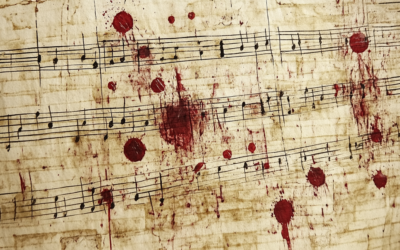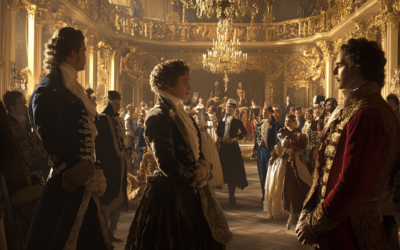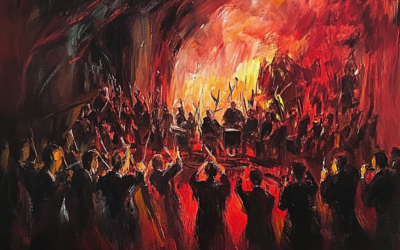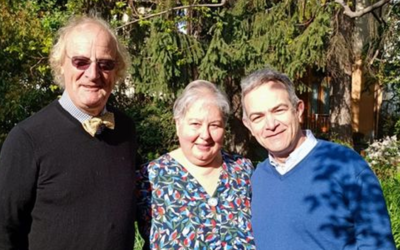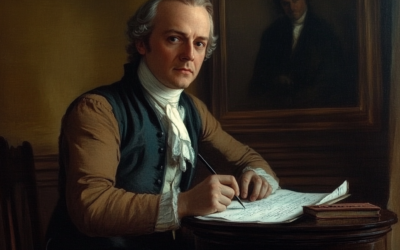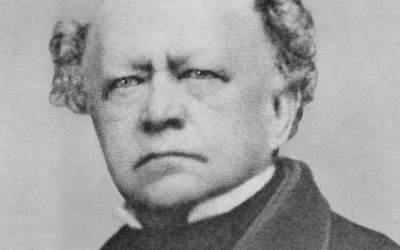The Truth Behind Mozart’s Canons
Simplicity, Errors, and the Myth of Perfection
Mozart is often praised as a master of form and complexity, but his canonic output tells a different story. Of the few canons he composed, most are surprisingly simple, often for equal voices and in unison.
However, two canons, K.553 and K.554, stand out not for their brilliance, but for their errors in counterpoint. Additionally, the myth surrounding the canon “V’amo di cuore teneramente” K.348 (K.6 382g) is finally debunked—Mozart never completed it.
The truth about these works paints a less flattering picture of the composer during this period.
Mozart: The Fall of the Gods
This book compiles the results of our studies on 18th-century music and Mozart, who has been revered for over two centuries as a deity. We dismantle the baseless cult of Mozart and strip away the clichés that falsely present him as a natural genius, revealing the contradictions in conventional biographies. In this work, divided into two parts, we identify and critically analyze several contradictory points in the vast Mozart bibliography. Each of the nearly 2,000 citations is meticulously sourced, allowing readers to verify the findings. This critical biography of Mozart emerges from these premises, addressing the numerous doubts raised by researchers.
"The errors in Mozart’s canons, from contrary octaves to parallel fifths, suggest a composer far from the technical perfection often attributed to him."
Mozart: The Fall of the Gods
Mozart is revered as a genius in all aspects of musical composition, but the reality of his canonic output may surprise you. Among the few canons he composed, most are simple, written in unison for equal voices, with little to no complexity. These are far from the intricate counterpoint often associated with his larger works.
Take, for instance, Canone K.553 and K.554, both of which belong to the sacred music genre. K.553 draws on a pre-existing Alleluia melody, while K.554 uses only two words from the Ave Maria. A popular tale claims Mozart composed the latter on the visitor’s register at a Bavarian convent—a charming story that turns out to be nothing more than an invention of the inscription added in 1813.
In reality, the Canone dell’Ave Maria was composed in 1788, during Mozart’s 32nd year. Yet, when compared to his earlier work, it shows signs of regression. The melody disobeys classical counterpoint rules: the vocal line jumps erratically from low to high registers, introduces dissonances, and features awkward harmonic transitions. The entire piece is anchored in F major, with only a single passing modulation. Mozart, by this stage, should have known better, especially given the polished works he produced in that same year.
The errors are glaring. Contrary octaves, parallel fifths, diminished fifths—it reads like a checklist of mistakes no 18th-century composer should have made. These failures are incompatible with the rest of Mozart’s output in 1788, a year marked by his great symphonies, which followed the strict compositional rules of the time.
K.553 fares no better. While the melody flows through stepwise motions and broader notes, the harmonic structure is riddled with unresolved dissonances and awkward chromatic sequences. Simple modulations from C major to A minor offer little in the way of ingenuity, and once again, Mozart fails to meet the basic expectations of counterpoint. The piece is littered with parallel fifths and octaves, with dissonances that clash in a way that suggests not innovation, but error.
One rare exception is V’amo di cuore teneramente K.348, written in G major for 12 voices divided into three four-part choirs. Here, imitation takes center stage, but even this work is not without its issues. Mozart left the piece unfinished, and it was later completed by Maximilian Stadler. Constanze, Mozart’s widow, even confirmed in a letter to Johann Anton André that Stadler was responsible for the missing sections. So, even this more elaborate canon does not fully belong to Mozart.
Ultimately, these works challenge the myth of Mozart’s perfection, revealing that even in his later years, his compositional skills were far from flawless.
You May Also Like
The London Pieces: Mozart or Make-Believe?
The London pieces, edited for modern tastes, lose their authenticity. Only the uncorrected originals show Mozart’s true early voice—naïve yet authentic.
The Myth of the “Viennese Classics”: Mozart’s True Heritage and the Empire’s Agenda
Mozart wasn’t the quintessential Viennese; rather, he was shaped by German heritage and an opportunistic empire that controlled music as fiercely as it did its people.
The Nationalistic Roots of the Philharmonic Legacy
Under Goebbels, the Berliner Philharmoniker became an instrument of Nazi propaganda, framing German composers as the supreme guardians of musical heritage.
Australian Scholars Confirm Our Findings on Mozart’s Forged Catalogue
Professor Martin Jarvis of Darwin University confirmed our long-held findings that Mozart’s personal catalogue is a forgery, during his recent lecture The Mozart Scam. Forensic analysis continues to unravel the myths surrounding Mozart’s legacy.
The Italian Journey
The Mozarts’ Italian journey of 1769 was not a leisurely Grand Tour but a strategic mission driven by ambition, navigating the treacherous roads of 18th-century Europe in pursuit of fame and fortune.
Mozart’s Music or Marketing Strategy?
Despite Köchel’s best intentions, his catalogue of Mozart’s works became a commercial tool, filled with questionable pieces added by publishers keen on profit rather than accuracy.


